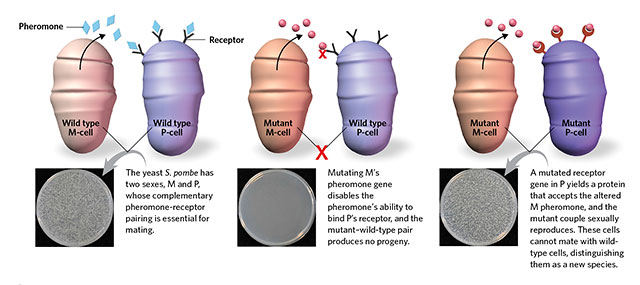Scientists Generate a New Species Mutating the Pheromone and Pheromone Receptor Genes

Scientists from Osaka City University have succeeded in creating a new yeast species with just two mutations. Chikashi Shimoda and coworkers mutated the pheromone gene of one of the mating types and the pheromone receptor gene of the opposite mating type in a way that they were only compatible with each other. The new, mutated mating types were thus unable to mate with the wil type yeasts, thus constituting a new species. The finding was published in PNAS.
The fission yeast Schizosaccharomices pombe can engage in sexual reproduction in certain environmental conditions. This yeast has two possible mating types, called M and P, that secrete the M-factor and P-factor pheromones. M pheromones have to be recognized by pheromone receptors on the opposite mating type (P) for pairing to happen, and vice versa. The researchers mutated the gene that codes for the M pheromone, making it unrecognizable for receptors on the P cells. Later, they randomly mutated the receptor in P cells until they obtained a mutant able to recognize the mutated M pheromone. The mutated couple was able to mate and have progeny. The most interesting result is that they were now unable to mate with the wild type S. pombe due to lack of pheromone-receptor pairing, thus constituting a new species.
Many speciacion processes are thought to have started with changes in the mate selection mechanism, so this study could reflect an evolutionary speciacion process. Pheromone-receptor mechanisms have been studied in other organisms, so this finding could be tested in insects and amphibians.

